Small home organizing tasks each day will add up over time. If you only do 15 minutes of organizing each day, you will have done an hour and 45 minutes per week; if you do it for one month, you will have done 4.5 hours. If you do it every day for the entire year, you would have done 54 hours per year of organizing. WOW! But, to do this, you will need to do some planning. You need to find things that you can do to not only clear out the room but also maintain the space not to allow any new piles to form. In this post, I will talk about tasks that you can do to not only get rid of clutter but also keep the clutter at bay. Come along for the ride.
Jump to:
- 1. Trash cans only help if you use them.
- 2. Piles are only helpful if each collection has a common topic or theme.
- 3. An organized process in place doesn't have to be magazine beautiful.
- 4. Labeling is only necessary if you can't see what is inside the container or bin.
- 5. For frequently used items, have a daily drop spot for everyone to use.
- 6. Stay consistent when putting stuff away; you will never be disorganized.
- 7. Create a donation pile corner in the garage.
- 8. Have stair bins to store items that need to go upstairs or downstairs.
First, understand that organizing a space isn't the same for everyone. There are some similarities, but every person is different. They have their way of doing things and assessing their situation. They also have their way of finding solutions. I worked with several people over the years, and I found that each person came to a slightly different conclusion regarding their organizing systems. And that is OK. Each one of us has to determine what works for each of us. One person, even a Professional Organizer, can't force their viewpoint on another, which is the case with creating organized systems in a home. However, there are some specific tasks that you can keep in mind, which will keep a room organized longer and be less overwhelmed with the messiness of the home.
1. Trash cans only help if you use them.
If you have a trash can (affiliate) in your bedroom and tissues and other things lying on different surfaces, you are not using the tool intended for that purpose. Over the years, I have found that people keep trash-really, garbage! Not for any reason, but they just stop before completing the task of throwing something away.
2. Piles are only helpful if each collection has a common topic or theme.
Some people are visual and may need to see what they need to do to remember the 'to-dos.' That is OK. However, you need to have a system associated with these piles. For example, one collection could be for to be paid bills. One pile can be for the papers you want to read before taking action on them. One pile can be waiting for action from someone else. Before making a collection, ask yourself to define the theme for the pile. Using a sticky note, write on it what action you need to do with this pile. When you add to the collection, move the sticky note to the top.
3. An organized process in place doesn't have to be magazine beautiful.
We all love how magazine homes look - perfectly displayed books and strategically placed figurines with no clutter to be cleared in the house. Well, that doesn't happen in real life, sorry to say. Systems need to be in place to make a home work truly. So, don't worry about the perfect look. Just make sure the room works for you.
4. Labeling is only necessary if you can't see what is inside the container or bin.
Labeling is essential, especially if you have other people using a space. However, if your system is well thought out and you know where everything is, you don't need labels (affiliate) on every single bin, especially if the bin is clear. Seeing through the container makes it easy to see what is inside quickly.
5. For frequently used items, have a daily drop spot for everyone to use.
We use a table in the entryway that holds chargers because no one will leave without their cell phones. If you want to use a closet, try including the charging station (affiliate) inside the closet with cubbies for shoes (affiliate) and hooks for bags. Staying consistent will minimize the lost items, like keys(visit our post about how to organize your keys) when you are rushing out the door.
Visit our other posts about entryway drop zones.
BEFORE AND AFTER: FOYER ORGANIZING KID'S BACKPACKS AND ACTIVITY SUPPLIES
WHAT TO KEEP IN YOUR ORGANIZED ENTRYWAY LANDING ZONE
6. Stay consistent when putting stuff away; you will never be disorganized.
When we take stuff out and don't return it to its home, it can get messy quickly. Creating systems does help. Creating habits to return things to their home will keep the system working for as long as you need the system. Decide when you feel the most productive in your day. Pick that time to spend returning items to their homes. Some people like to do this at the end of each day. Some prefer doing it at lunchtime. Others prefer to do it in the morning when they wake up. There are two benefits of doing this each day.
- You will always be able to find your stuff.
- You will know when something is missing.
7. Create a donation pile corner in the garage.
A garage (affiliate) or basement is a perfect place to add a donation corner. Keeping these items near the door and donating items each month or quarter will minimize the mess in the home. Adding a reminder to your calendar that says "bring things to donate" will keep you decluttering.
8. Have stair bins to store items that need to go upstairs or downstairs.
Do you have more than one floor? Maybe it's time to add bins to the steps. Using small bins and labeling them for each family member will help you delegate the task of clearing out items on the main floor. Check out my post about it. HOW TO USE CATCH-ALL BINS TO STAY ORGANIZED.
Above all else, when determining your process, look at the big picture and decide not only what you want to organize but also how you would maintain it. Remember, it's not all about the organization. I hope this post inspires you to get your home organized for good.
Looking for even more inspiration on keeping your home organized? Check out these other experts' articles.
Please note these are affiliate links through Amazon (affiliate), and at no additional cost to you, I will earn affiliate fees if you decide to make a purchase.
Want more ideas? Visit our posts about organizing small homes.
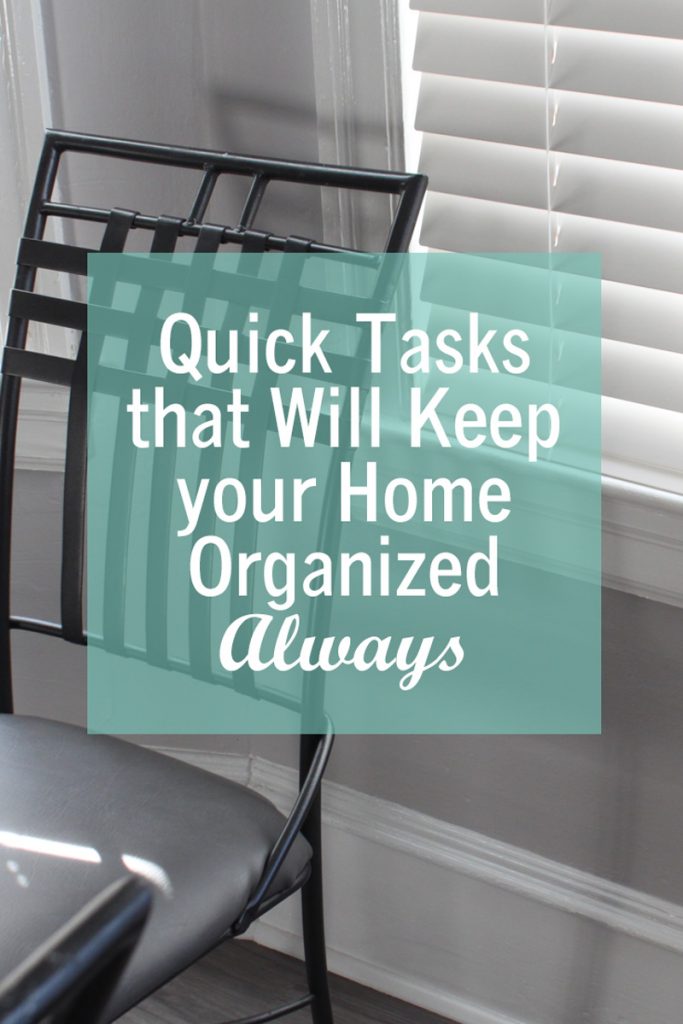
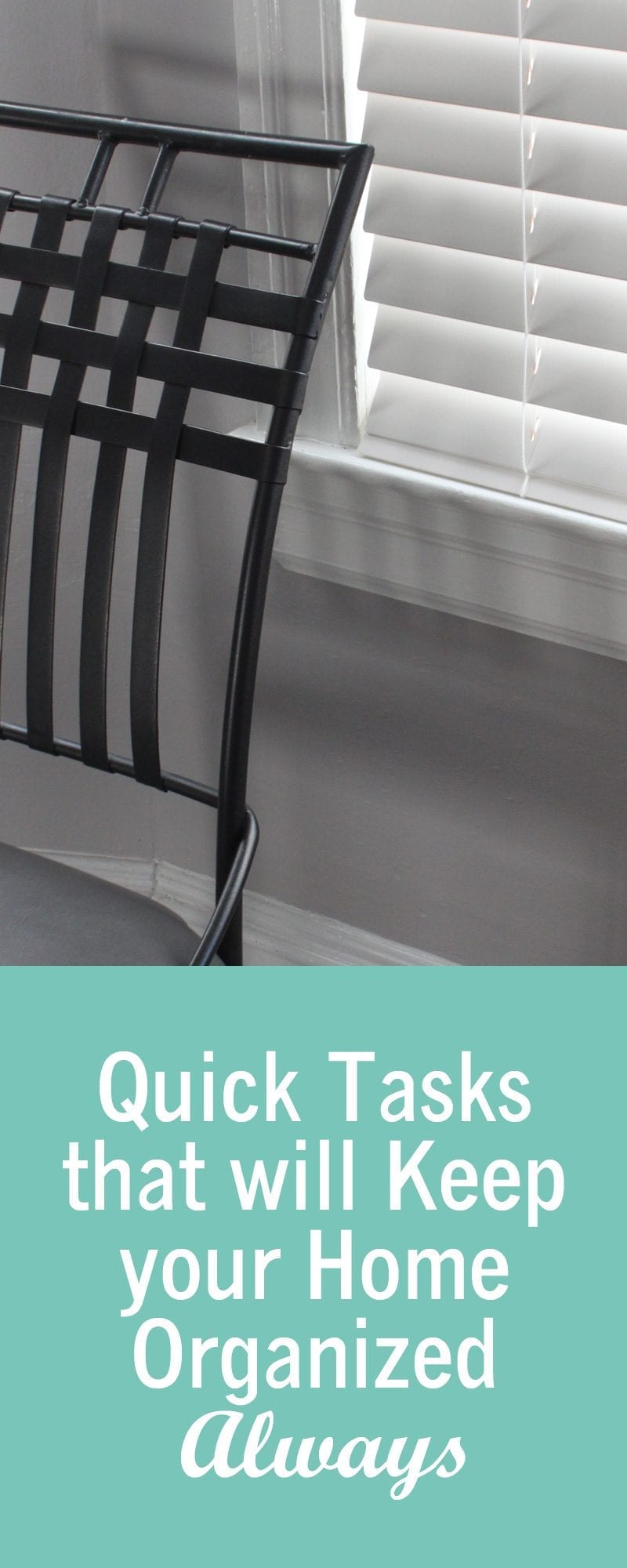
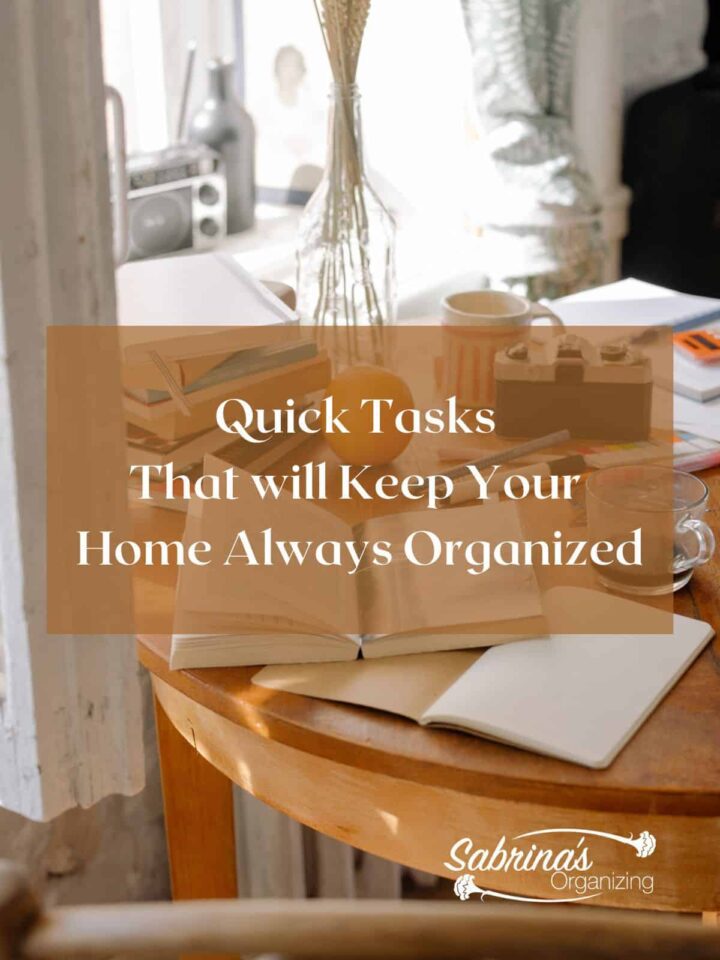


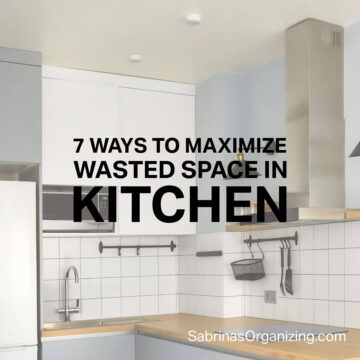
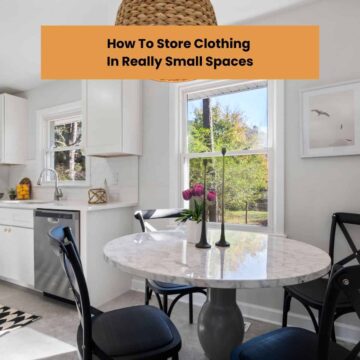
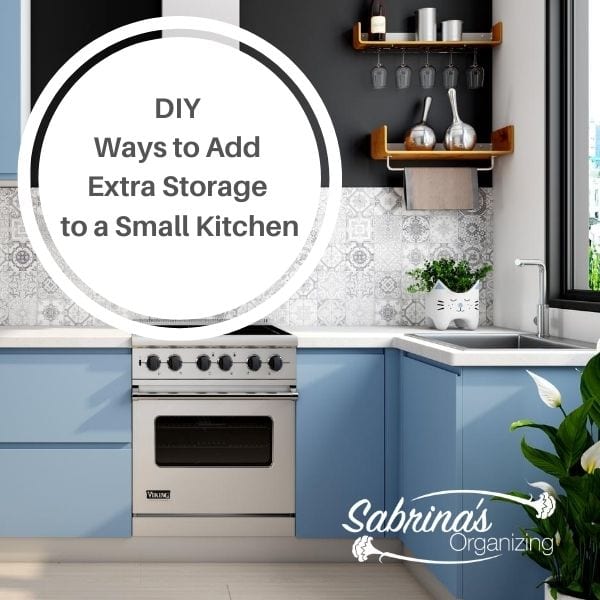


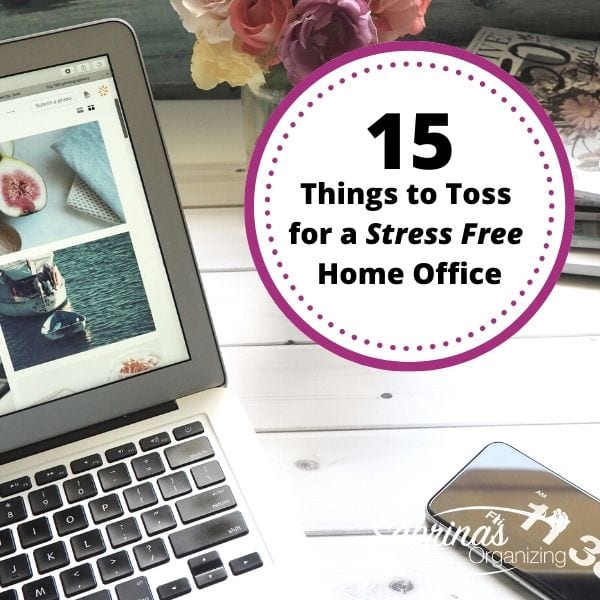
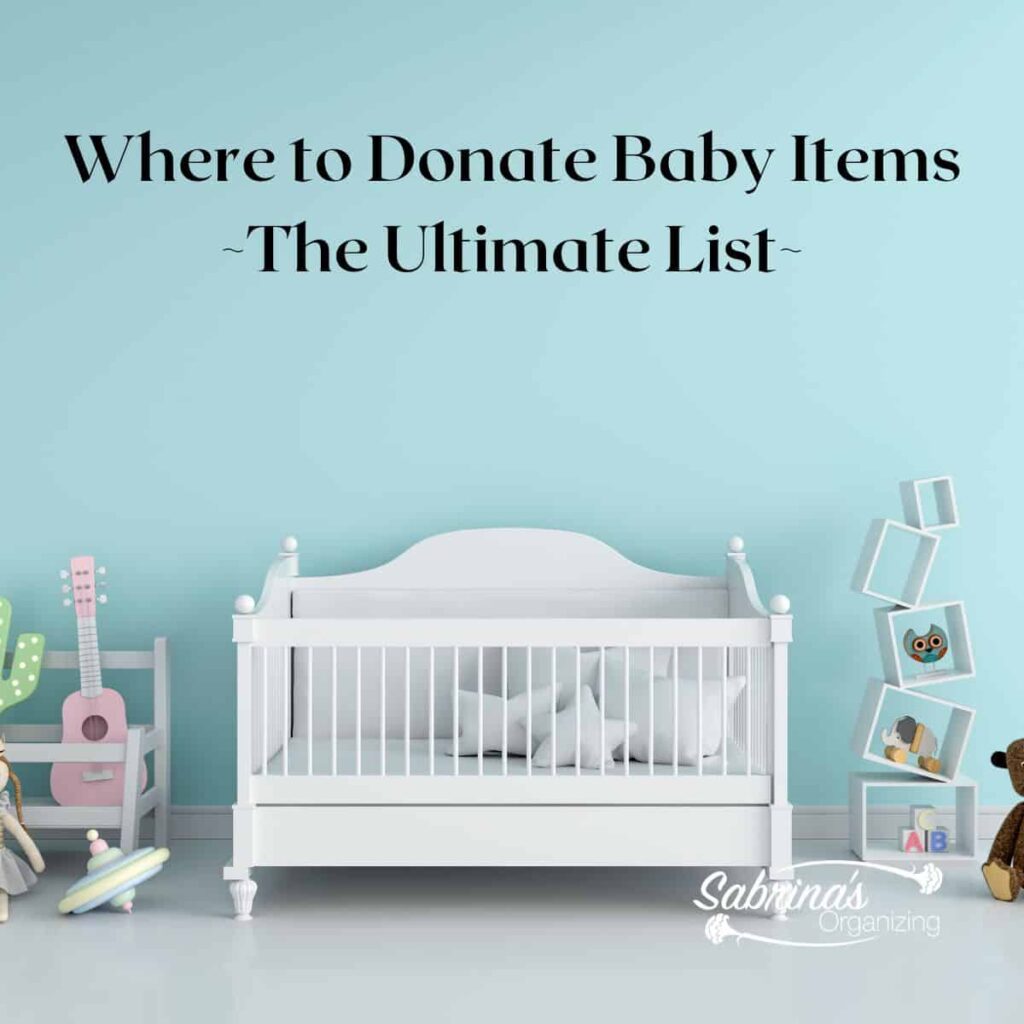
Janet Schiesl says
It's always so great having tips that aren't time consuming but that add up to great outcomes.
Julie Bestry says
They may be quick tips, but they are tiny bits of organizing magic.
I've seen crumpled bits of papers, used envelopes, tissues, paper cups and napkins, etc., just sitting on surfaces because the trashcan went unused. Perhaps because it was unlined (and the person knew they'd have to dump it out eventually), perhaps because it was too small (and they'd have to go to the labor of emptying it. But each space needs a place to collect what's going away (similar to your donation bin comment, as well). All of this advice is practical but so simple to employ! And let's face it, some people will always be pilers, but keeping one category to each pile will at least apply a systematic approach so things can be found again. It's a start!
Jonda S Beattie says
I especially like the being consistent when putting things away. I am always telling my clients, "Don't put it down. Put it away."
Sabrina Quairoli says
Great phrase, thanks for sharing, Jonda!
Linda Samuels says
I appreciate how that advocated that there isn't a one-size-fits-all approach to being, feeling, or getting organized. You beautifully described some solid organizing strategies and principles, which are helpful. They can also help identify what's not working. For example, perhaps someone has many items to let go of and donate, but those things are spread around the house and create cluttered rooms. Your suggestion to contain the donations in a single, known area (i.e., garage, attic, or closet) is an excellent solution.
Sabrina Quairoli says
Thanks for commenting, Linda!
Diane Quintana says
These are fabulous, Sabrina. My favorite is the trash can tip. I so agree. I can't tell you how many times I've been in a home where there is an empty trash can in the corner of the room and little bits of trash here and there. Trash cans are only good to have if you use them (and empty them) regularly!
Sabrina Quairoli says
Thank you for commenting, Diane!
Seana Turner says
I pretty much find trash in every space I organize. Common culprits are empty cups, twist ties and clothing labels (along with the plastic ties that hold them in place.) If a trash can isn't nearby, it can be so much easier to simply "stick it" on a shelf or surface. Getting the can into the space is step one, and then - as you point out - we've got to use it!
Linda Samuels says
Small moments definitely add up. I like the math calculations here that quantify what can be accomplished within a year on only a 15-minute a day effort. This is a great point because organizing can feel so overwhelming to some, but with some regular maintenance effort, it becomes doable to keep systems working.
Kim says
I love the sticky note idea. You think you will remember what your plan was with the pile (papers, for example) but it is easy to forget and then it all gets mixed in with the mess. I will try this myself with my desk. I can just see myself going through the pile and then its "oh yeah, I need to do that as well". I also tend to do a few things while waiting for the kettle to boil which is always a good use of time.